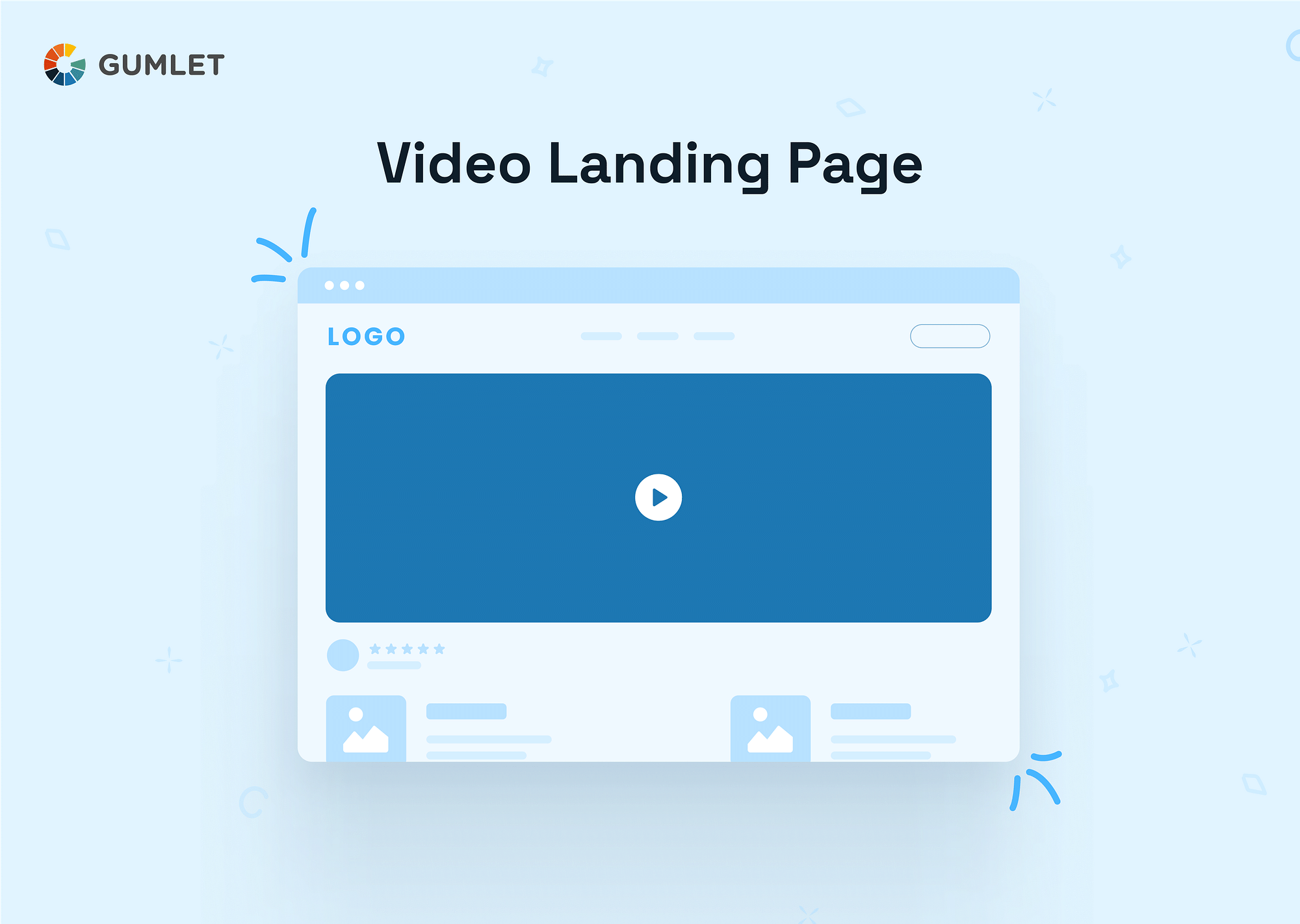Why is Video SEO Important for Small Businesses?
Video SEO can improve a business’s online visibility, direct website traffic, and boost engagement with the target audience. According to a study by Tubular Insights, videos are shared 1200% more than links and texts combined, and 91% of the enterprises have adopted video making them an effective marketing tool.
Here’s how a fool-proof video SEO strategy can help your small business:
- Optimizing videos for search engines will help small businesses appear higher in search results.
- Optimized video content is more likely to drive traffic to the business’s website. This is supported by the fact that according to Cisco, online videos make up around 82% of all consumer traffic on the internet.
- Videos increase engagement more effectively compared to texts and links.
- Optimized video content can increase brand awareness and visibility for small businesses.
Video SEO Checklist for Small Businesses
Video optimization is a complex process that encompasses various strategies. Some of the methods and techniques that you can implement are:
Keyword Research for Video SEO
Keyword research is an important component of video marketing. Small businesses can optimize their video content by identifying and targeting trendy keywords to align with popular search queries and improve visibility. Similarly, keyword research can help businesses identify their preferred industries' pain points, interests, and gaps.
Here are some tips for performing efficient keyword research:
- Use online keyword research tools like Keyword Planner, SEMrush, Ahrefs, or alternatives to Ahrefs for more features.
- Prioritize relevant keywords according to their search volume and competition level.
- Use long-tail keywords that have slightly less competition but higher intent.
- Look for trending keywords that align with the subject matter of your video.
- Have a balance of broad and specific keywords to capture a wide range of search queries.
- Keep monitoring the performance of your keywords and make adjustments wherever needed.
Optimising Video Metadata
Video metadata is one of the most crucial aspects of improving video engagement. Different types of metadata, like the titles, descriptions, and tags used in a video, can help search engines understand the context of the video and index it efficiently, making it more discoverable for the relevant searchers.
Optimizing video metadata can also improve user experience as they will understand the purpose of the video and be able to filter through the important portions of the video, leading to higher engagement metrics. To better understand how to optimize your video metadata, refer to this detailed blog.
Video Transcripts and Closed Captions
You can optimize your online videos by including video transcripts and closed captions. Doing so will make your content more accessible to a wider audience. Moreover, transcripts and closed captions also contribute to the textual content associated with different videos. Search engines may rely on such texts to index the video content efficiently, improving the video's visibility in search results.
Here's how you can optimize your video transcripts and closed captions for maximum efficiency:
- Use video editing software or a captioning tool to create closed captions.
- Transcribe the dialogue and important audio elements of the video.
- Break the captions into small, readable chunks.
- Sync the caption with the appropriate timing of the audio in the video.
- Ensure accuracy by proofreading the caption thoroughly.
Video Sitemaps and Schema Markups
Video sitemaps give search engines a thorough map of the video content on any website. If you include URLs, titles, descriptions, and other relevant information in the sitemap, search engines can properly index your videos and understand the purpose and context of the content. On the other hand, Schema markups lay down the standardized format for tagging and organizing such video information to help search engines display these details in search results.
Optimizing your website's video sitemaps and schema markups facilitates the creation of rich snippets, which display additional information about the video, like thumbnails and ratings. These visually appealing snippets can attract attention and improve engagement.
Here are some of the best practices for implementing schema markups for maximum video optimization:
- Select the appropriate schema markup type that accurately represents your video content (like "VideoObject" or "Article").
- Include the required properties for the chosen schema markup, like video title, description, duration, or upload date.
- Provide accurate and descriptive information.
- Optimize the metadata for keywords.
For more information on how to optimize video sitemaps, refer to this article here.
Video Engagement Metrics and Optimization
Important video engagement metrics, like likes, comments, and shares, play a pivotal role in determining the success and impact of any video content. They are capable of providing insights into how viewers perceive your online content. Moreover, these metrics also influence different algorithms and platforms, potentially leading to better visibility and increased organic rankings.
You can employ the following strategies to improve your video engagement metrics:
- Embedding videos on relevant websites and blog posts to increase exposure and viewership.
- Optimize titles, descriptions, and tags with relevant keywords.
- Engage with your audience and foster a sense of community.
Video Distribution and Promotion
Finally, you must ensure you advertise your video content for maximum engagement. Knowing social media KPIs is crucial because it can help you reach a large audience and increase engagement with your videos. Email marketing is another avenue that you can explore to increase click-through rates, reach the targeted audience, and nurture customer relationships. Small businesses can also expand by collaborating with influencers and other channels.
Here are some tips for optimizing video distribution channels:
- Customize video content for each platform.
- Use attractive thumbnails and entrancing titles.
- Incorporate the use of relevant hashtags and keywords.
- Leverage the strength of influencer marketing.
- Embed videos on different websites and blogs.
- Make use of paid advertisements.
- Monitor analytics to track video performance.
Some popular channels and platforms for video distribution and promotion are:
- Social media platforms like Facebook, Instagram, and Twitter.
- Video hosting platforms like YouTube and Dailymotion.
- Email marketing platforms like Campaign Monitor.
- Partnerships with influencers and content creators.
- Website and blog embedding.
- Paid advertising platforms like Google Ads.
- Live streaming platforms.
Monitoring and Analytics
A key part of video SEO optimization is to adjust according to changing circumstances and trends. For this, small businesses need to track the performance of their video content by using relevant metrics like views, watch time, click-through rate, comments, conversion rate, audience retention, and so on.
Among these, the conversion rate is an important metric for small businesses. To increase that, consider including relevant CTAs (Call-to-Action) in your videos to encourage viewers to interact with the video. Small businesses often waste a huge chunk of their resources on ineffective campaigns without measuring the conversion rate of their online content. They can also benefit from SEO services to enhance the visibility and effectiveness of their online campaigns.
How to Rank Your Videos on Google?
If your video content is properly optimized, it’ll rank high on Google, leading to increased visibility, higher engagement, and better organic traffic growth.
Here are some tips on how to improve your video’s Google rankings:
- Use popular topics to create video content. Tools like Content Explorer can help you find trending topics.
- Optimize video by conducting due keyword research and using high-traffic keywords in your video content.
- Optimize video titles, descriptions, and tags with targeted keywords to improve visibility.
- Include a transcript or closed captions for your videos to provide text-based content that top search engines can crawl and index appropriately.
- Host your videos on YouTube; it can help draw significant traffic to your content and offer tons of branding opportunities.
- Embed your videos on relevant but authoritative web pages.
- Optimize file sizes and leverage video compression techniques to ensure fast loading times.
- Implement the use of video sitemaps and schema markups.
- Build a high-quality network of backlinks for your video content from reputable websites.
Challenges Faced by Small Businesses for Video SEO
Here are the primary challenges that small businesses are facing in the current video SEO climate:
- Small businesses have limited budgets and resources, preventing them from leveraging advanced techniques to improve their video SEO. They can overcome this by leveraging free tools for optimizing their videos and making an in-house team for optimizing video SEO.
- Small businesses have strict competition in their fields. The solution to this is to focus on a sub-niche within the industry and gain expertise in that area.
- Small businesses cannot keep up with changing algorithms and trends in the SEO industry due to a lack of a proper team. The only solution to this is to keep up to date with the latest industry news.
- Small businesses often target incorrect keywords. One way to overcome this is to focus on user intent and derive keywords accordingly.
- Small businesses often struggle to have high ranks on the Search Engine Results Page (SERP). They can overcome this by focusing on local SEO and improving their rankings accordingly.
- Small businesses don’t have the relevant expertise to focus on mobile optimization. Their websites, therefore, might look different for mobile owners. This is a huge problem as most users browse the internet on their smartphones today. To avoid this, the business must spend a little on optimizing its website for mobile phones.
Best Video SEO Tools for Small Businesses
Looking for some affordable video SEO tools to take your content to the next level? Here are some top-notch recommendations:
Video Editing and Production (DaVinci Resolve)
DaVinci Resolve is a professional-grade video editing software with many features, including color correction, audio post-production, and visual effects. It stands out for its powerful editing capabilities, including tools like robust timeline editors, multi-camera editors, and advanced trimming tools.
DaVinci Resolve is highly affordable for small businesses. It also has a free version that provides some features and can fulfill basic video editing needs. The premium version offers more advanced features.
Video Analytics (Gumlet Analytics)
Gumlet Analytics allows you to track your overall video performance, evaluate engagement metrics like completion rates, unique views, or maximum concurrent viewers, and analyze latency metrics like the start-up time taken by the player, seek latency, and so on.
These unique metrics can help you better understand why some of your videos might be doing better than others in terms of performance and help you make the necessary adjustments to fix the issue.
Keyword Research (VidIQ)
VidIQ offers comprehensive insights into what keywords to use for a particular topic. It offers a robust keyword research feature besides an expansive set of features.
By evaluating factors like search volume, competition, and trends, VidIQ can help video creators make data-driven decisions for their content. It also has a relatively simple interface and is extremely easy to use. VidIQ is also very affordable for the kind of services it can offer.
Video Repurposing (Kapwing)
Kapwing is an online video editing platform that offers a wide set of features for repurposing and editing video content. It allows users to trim, crop, resize, and add text or captions to their videos. Using the tool, you can also add overlays, subtitles, and different types of visual effects to enhance the visual appeal of the content.
Kapwing’s intuitive interface and user-friendly tools set it apart from other options, making it highly accessible to beginners and experienced users.
YouTube Marketing (Telebuddy)
Tubebuddy is one of the best tools to enhance your YouTube marketing campaign. It comes with a wide range of expansive features and functionalities.
With it, you can enjoy advanced keyword research features, video optimization tools, analytics, and competitor analysis. These help users optimize their YouTube channels and improve their online performance.
Tubebuddy has a user-friendly interface and affordable pricing options, making it a popular choice for small business owners, content creators, and marketers.
Conclusion
Video SEO holds significant importance for small business owners and marketers, serving as a crucial means to enhance their reach, conversion rates, engagement, and overall performance on the internet. Given the prominent role of videos in online activity, harnessing their potential can prove to be a formidable strategy for bolstering brand visibility and raising awareness. Learn more about useful tools for small businesses here.
Frequently Asked Questions (FAQs):
1. Does adding videos to your website help with SEO?
Adding videos to your website can help with SEO by increasing engagement and dwell time and providing multimedia content that can attract more visitors and improve search rankings.
2. How do you plan a video SEO strategy?
You can plan a video SEO strategy efficiently by conducting keyword research, optimizing video titles, descriptions, and tags with relevant keywords, creating high-quality and engaging video content, utilizing video transcripts, and promoting your videos through various channels.




